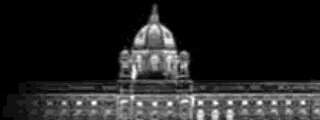OeTyp history and database details
Introduction
The "Catalogue of Palaeontological Types in Austrian Collections"is a database that includes types as well as figured specimens and reference material kept in Austrian institutions. Currently it contains more than 50 000 animal and plant fossils. Regular updates are provided as further published fossil material is included.
This database's intention is to offer quick access to basic information about the scientifically most important palaeontological specimens.The version accessible by internet is an extract of the database that is kept in the institutions contributing to this project.
History
OeTyp is the brain-child of Dr. Johanna Eder (formerly at the Natural History Museum Vienna , now head of the Staatliches Museum für Naturkunde Stuttgart) and Prof. Dr. Helmut Flügel (former head of the Institute of Geology and Palaeontology at the Karl-Franzens-University Graz). Its origin lies back in the late 1980ies when J. Eder started to digitalise the paleontological collection of the Natural History Museum Vienna. Soon the idea was born to include all paleontological types and originals in Austrian collections. A nationwide inventorization has been underway since 1993 under a contract by the Austrian Academy of Science's Commission for the Palaeontological and Stratigraphical Research of Austria. Johanna Eder supervised these efforts until 2003. In 2004 she was followed by Andreas Kroh, the current head of the OeTyp-Project.Learn more about OeTyp
Database details
The database structure of the internet version comprises the following fields:- generic name inluding subgenus
- species name including subspecies
- author(s) of the species name
- status of the type as holotype - H, paratype - PT, lectotype - L, paralectotype - PL, syntype - S, neotype - N, isotype - IT, typoid -T, figured specimen - AO, reference material - BM (use the abbreviations for the search run)
- collection file number
- reference
- illustrations
- institution where the material is kept (use the institute code listed under institution for the search run)


